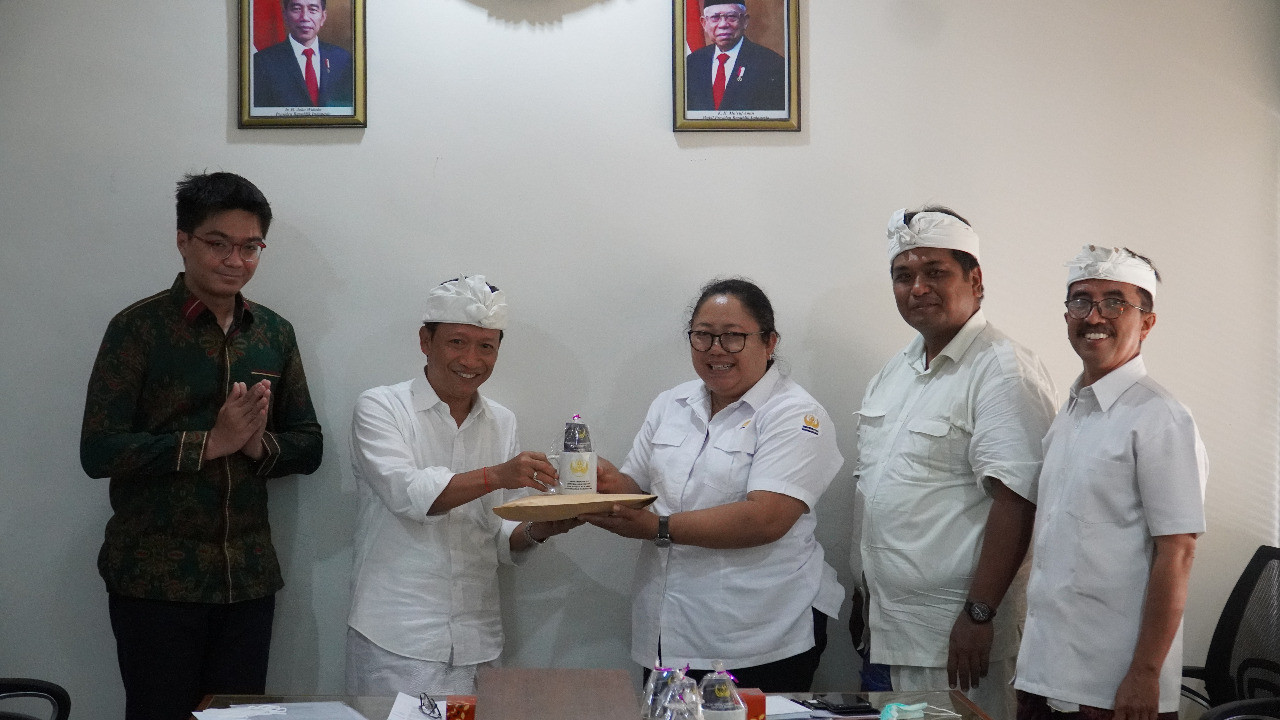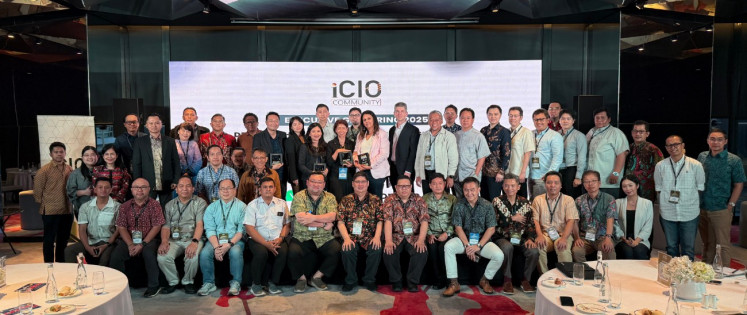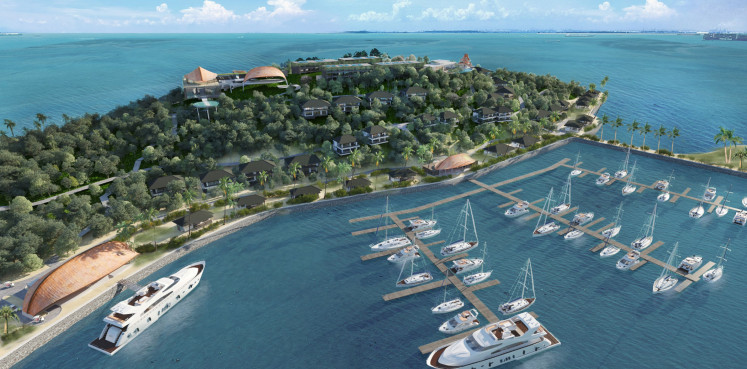Popular Reads
Top Results
Can't find what you're looking for?
View all search resultsPopular Reads
Top Results
Can't find what you're looking for?
View all search resultsBali expected to increase the number of BIM construction projects
Change text size
Gift Premium Articles
to Anyone
T
he head of Public Works, Spatial Planning, Housing and Settlements of Bali province, Nusakti Yasa Wedha, on May 31, 2022 took a first look at research conducted on the Building Information Modeling (BIM) application.
The study was done by graduate students in infrastructure and environmental engineering and undergraduate students studying civil engineering at Warmadewa University, as well as the Bali BIM Community and BIM software developer PT Glodon Indonesia.
BIM represents a technological advancement in the architectural, engineering and construction industries that produces an integrated, accurate virtual model and output volumes, while reducing construction waste based on the best bar bending schedule for iron cutting and formwork. The research conducted on the BIM implementation model was also based on best practices.
Moreover, the BIM application can also be used as a communication tool between construction stakeholders, such as project owners, supervisors, planners and implementers while working on construction projects.
However, the use of BIM in construction projects in Bali is still low, with the data revealing that the software was used in only 4.65 percent of all Public Works and Housing Ministry (PUPR) projects from 2020 to 2022 in Gianyar regency. In addition, its use was limited to large construction projects.
The research project presented to Nusakti is aimed to change this by finding the best model for implementing the BIM in Gianyar as well as across the province. One of the added benefits of using the BIM is to ensure the competitiveness of Bali’s construction companies by adopting and applying continually developing digital technologies in the sector.
The research employed a combination of qualitative and quantitative methods, and included a survey of construction stakeholders in Bali. The survey results showed that several factors enabled them to adopt BIM technology; such as a BIM coaching and training agency and the streamlined use of the software among all parties including the government, planners, contractors and supervisors.
Based on the survey results, the researchers were able to boil down the BIM implementation into four steps.
The first step is to conduct regular counseling and training sessions on BIM’s benefits and use. The second step is to standardize draft plans to simplify modeling using the BIM applications, followed by providing access to partners and small service providers in adopting the application. The fourth and final step is to establish a standard operating procedure (SOP) on using the BIM in the transition from the planning stage to the construction stage.
The SOP has now been developed, along with the initial planning stage using an AutoCAD 2D drawing template, which has made the modeling stage using the BIM Cubicost Glodon application easier and faster. The SOP succeeded in defining the role of each stakeholder in the implementation process, particularly the application developer and the project owner.
The application developer is responsible for providing technical assistance and training, as well as evaluating and monitoring BIM implementation and accountability as regards a specific project, implementing green building practices to reduce construction waste, and developing 3D building models.
Meanwhile, the project owner is in charge of planning, drafting models according to the specified template, evaluating draft plans and preparing for project implementation. The process will only be succeed if both stakeholders work closely and cooperate with each other in using BIM technology.
Nusakti expressed his appreciation to the Warmdewa University research team, the Gianyar Public Works and Housing Office and PT Glodon Indonesia. He also expressed his hope that Balinese contractors could adopt BIM technology using the SOP and produce superior human resources in the construction sector.
Using the BIM application can facilitate green building developments to reduce construction waste. While encouraging all construction projects in the province to implement BIM may be a challenge, the central government has issued several regulations that promote the use of BIM technology in construction projects nationwide, including PUPR Minister Regulation No. 22/2018 and Government Regulation No. 16/2021.
Warmadewa University, the Gianyar Public Works and Housing Office and PT Glodon Indonesia have also collaborated in human resource development to support the implementation of BIM.
The university’s engineering and planning faculty and its infrastructure and environmental engineering graduate program, together with the regional public works office and PT Glodon Indonesia, have held three BIM Cubicost training sessions for workers. The training program is in line with the vision of the university’s master of engineering program to produce graduates with expertise in infrastructure engineering and regional planning toward developing ecotourism with global competitiveness by 2034.










